Learn how to plant garlic in the fall for a fantastic garlic harvest the following summer. I’m sharing how to properly plant garlic, when to plant it, and the specifics for growing garlic from a clove.

Table of Contents[Hide][Show]
Why I Love Growing Garlic
Is there a better herb to grow at home? I think not! The humble garlic clove has so many uses, from an essential ingredient in my homemade fire cider to homemade garlic infused olive oil to one of my favorite medicinal herbs to grow at home.
I love that garlic is one of the plants you plant in the fall after the garden has generally stopped producing, then it does its thing, all on its own, early spring and summer.
If you’ve never had homegrown garlic before, just like anything else, you just won’t believe how delicious it is!
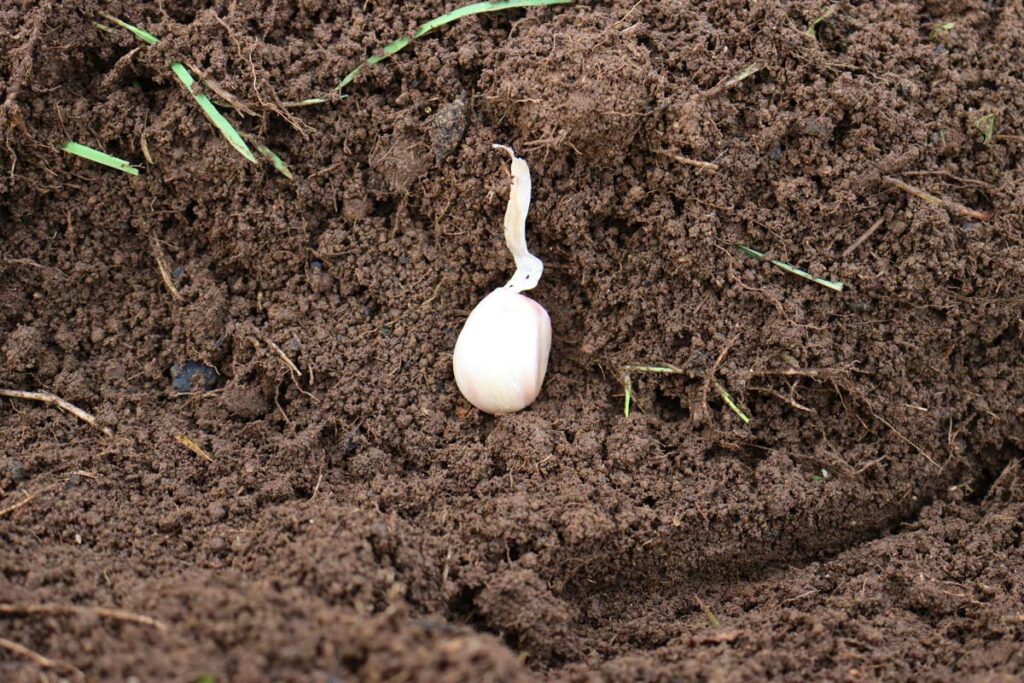
Can I Grow Garlic From a Clove?
Yes! Growing garlic from a clove is exactly how you grow garlic. It’s important that you plant your clove in the ground the correct way, so keep reading to find out exactly how to plant garlic cloves.
One tiny garlic clove planted in the fall will form an entire head of garlic the following summer. Plan to plant garlic when you are getting your homestead ready for winter.
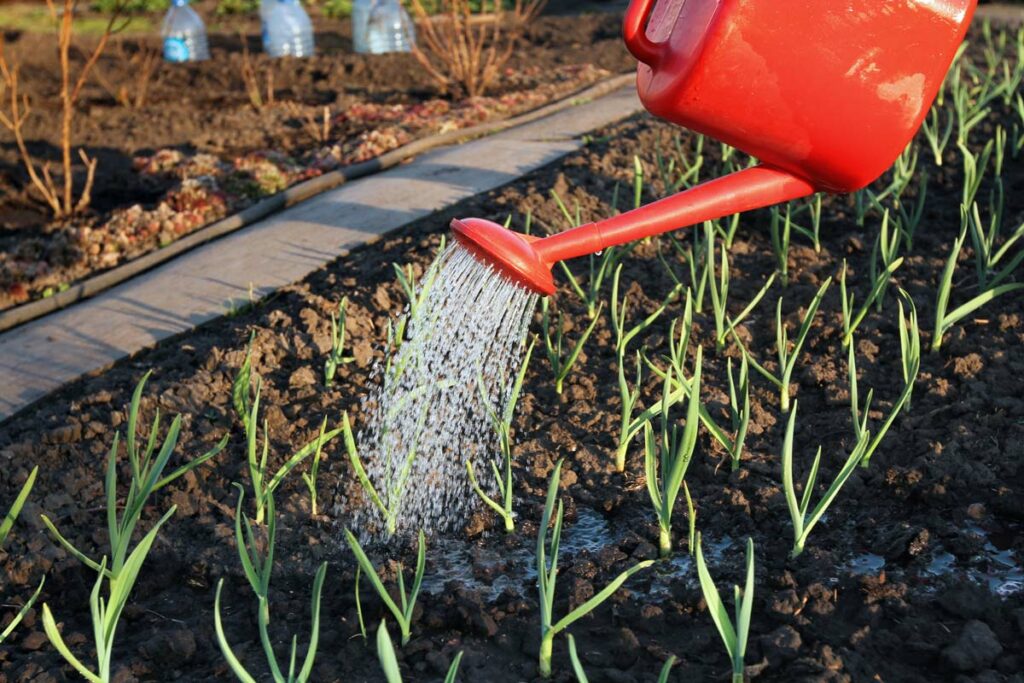
Subscribe to Melissa K. Norris!
Get updates on the latest posts and more from Melissa K. Norris straight to your inbox.
We use your personal data for interest-based advertising, as outlined in our Privacy Notice.
How Long Does Garlic Take to Grow?
Here in the Pacific Northwest, we plant our garlic in early to mid-fall, when the ground is still workable, preferably before any snowfall has occurred. Garlic harvest isn’t until early summer the following year, but that doesn’t mean it’s growing that entire time.
One might say garlic takes 9-10 months to grow, but truthfully the garlic grows for a month or so once planted, creating a tiny shoot, then the rest of the growth happens early spring until harvest.
You can add a nice thick layer of mulch or straw over the garlic just after the tiny shoots have emerged. If you’re planting extra late in the year and the threat of snow is imminent, you can also mulch right after you plant. I prefer to do everything at once so we add our straw right at planting time.
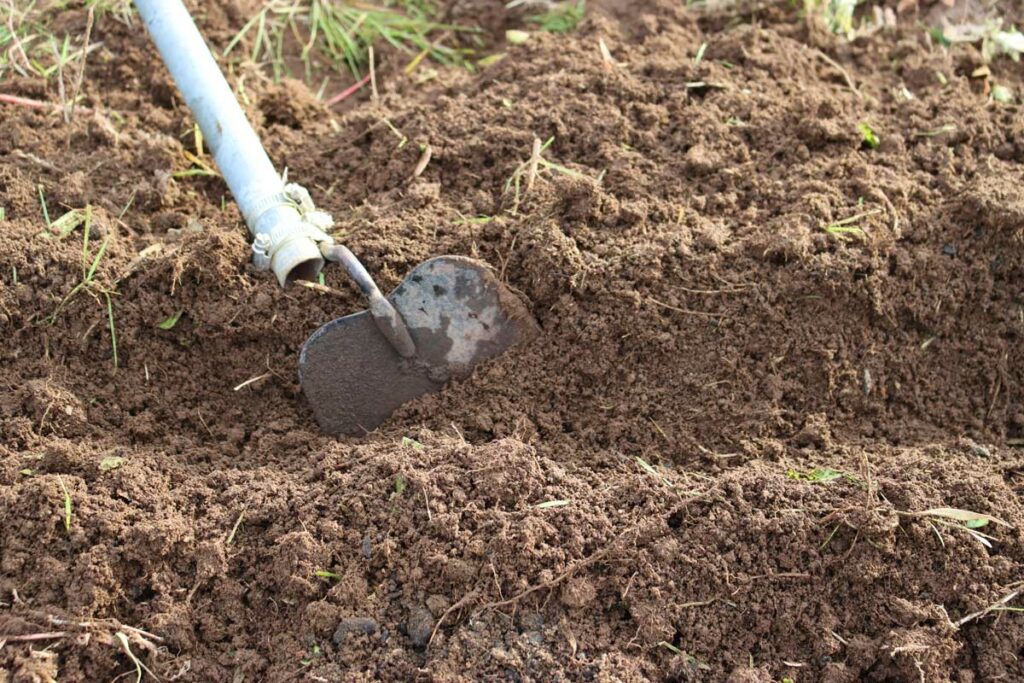
What Month Do You Plant Garlic?
Traditionally, October is a month of harvest. But in the Pacific Northwest (and many other parts of the country) October is the month you plant garlic for a summer harvest.
We plant our garlic the first week of October, but if the ground hasn’t frozen or endured a deep frost, you’re safe a few weeks in. The rule of thumb is to plant garlic two weeks before and up to two weeks after your first frost in the fall.

What Garlic is Best to Plant?
You’ll need to decide if you want to plant soft-neck or hard-neck garlic. We prefer soft necks so we can braid them to hang in the kitchen. Plus, soft neck has a longer shelf life.
Hardneck garlic cannot be braided and has a much shorter shelf life, but it usually has a stronger more complex flavor.
In the photo above you can see a variety of each. The soft-neck garlic is the braids (and larger heads), the hard-neck garlic is the smaller single bulbs..
Some people choose to grow a variety of garlic, soft-neck garlic for long-term storage, and hard-neck garlic for turning into homemade garlic powder or using it medicinally.
My favorite is soft neck Inchelium Red Garlic, it stores incredibly well, is very prolific (lots of cloves per bulb), and is considered a gourmet (aka delicious) garlic.
How Much Garlic Should I Plant Per Person?
This depends on how much garlic you eat. We tend to be if a recipe calls for one clove let’s use at least three type of people.
The average recommended amount is 15 bulbs per person. Find out more on How Much to Plant Per Person for a Year’s Worth of Food here.
Soaking Garlic Before Planting
Many people wonder whether or not you need to soak garlic before planting. And after a quick search on the interwebs, there is much recommended for this step.
My answer may differ from many recommendations out there, but here are my thoughts on soaking or not soaking garlic before planting…
- The reason most people soak their garlic seed in water mixed with baking soda is to kill any potential fungal disease on the cloves before planting. However, certified seed garlic is tested and guaranteed to be free of fungal disease, therefore there is no need to soak certified seed garlic.
- If you’re not sure if your garlic has been contaminated with fungal disease, my recommendation would be to try finding certified seed garlic and not planting the questionable garlic.
- If you don’t have any other options for planting garlic, I would recommend planting those cloves in a separate area, away from your main crop garden, in a container or something small where you can dispose of the soil if it turns out your garlic was infested. (A kiddie pool is a great inexpensive option!)
- Here in the damp and rainy Pacific Northwest I would never soak my garlic because we already have very damp soil in the fall, so soaking my garlic and then planting it into damp soil is just a recipe for mold or rotting cloves.
- The one and only caveat where I could possibly see the reason behind soaking garlic before planting is if you live in a very dry climate. But even then, I would just recommend making sure your soil stays adequately mulched, amended, and watered well to stay damp enough for the garlic to begin to sprout.
Where Do I Buy Seed Garlic?
I recommend you purchase your seed garlic from a local grower if possible. Most store-bought garlic has been sprayed so it won’t sprout in the store, meaning it won’t sprout in your soil either.
We bought our initial seed garlic from a local farming store, which stocked garlic that was grown on a local farm. Plus, local farmers know which varieties will grow best in your climate and area.
However, I’ve also since found and ordered (I like to try out a few new varieties each year) this organic garlic seed farm.
Softnecked garlic is usually easier to grow.
Once you’ve grown a garlic crop, you can save some bulbs from your own harvest to plant the next year. Just remember, one clove of garlic will equal a bulb of garlic. Keep reading below for tips on getting the best quality garlic heads year over year.
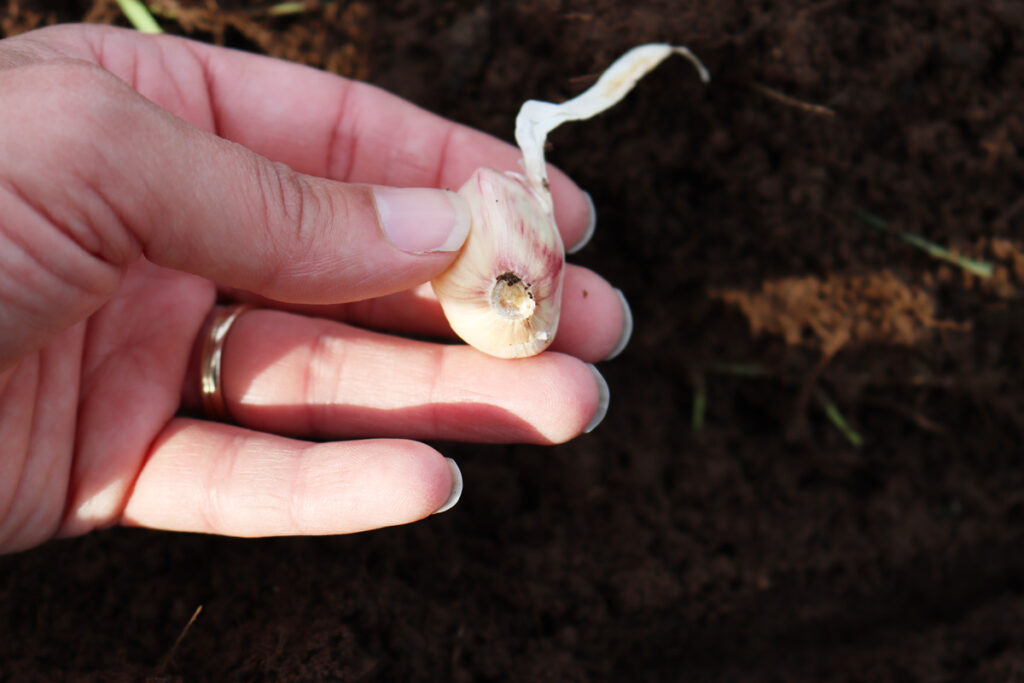
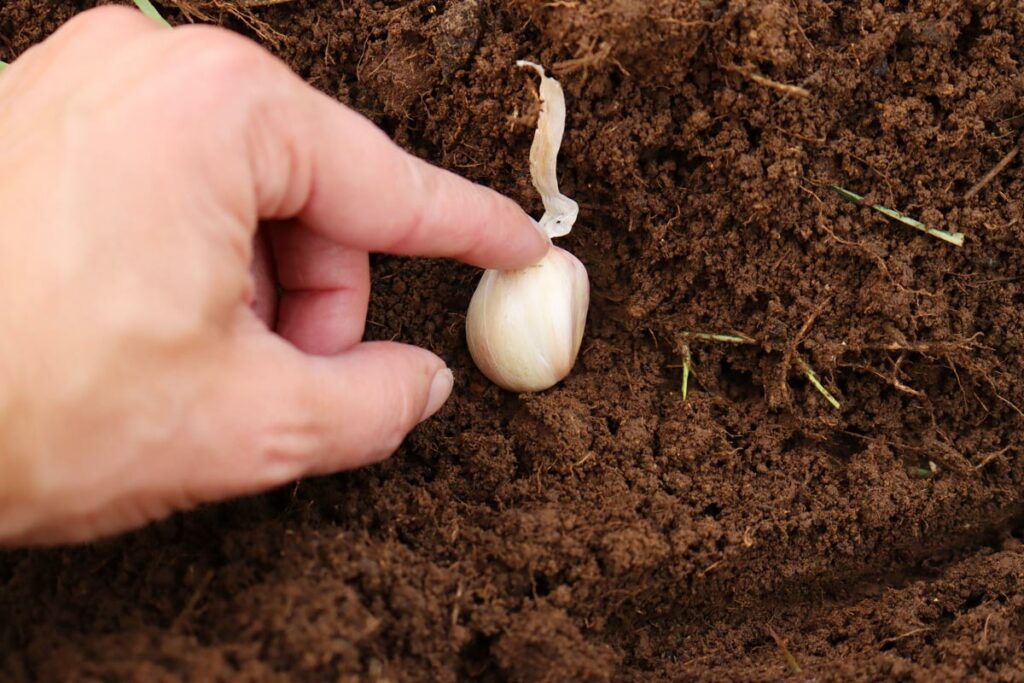
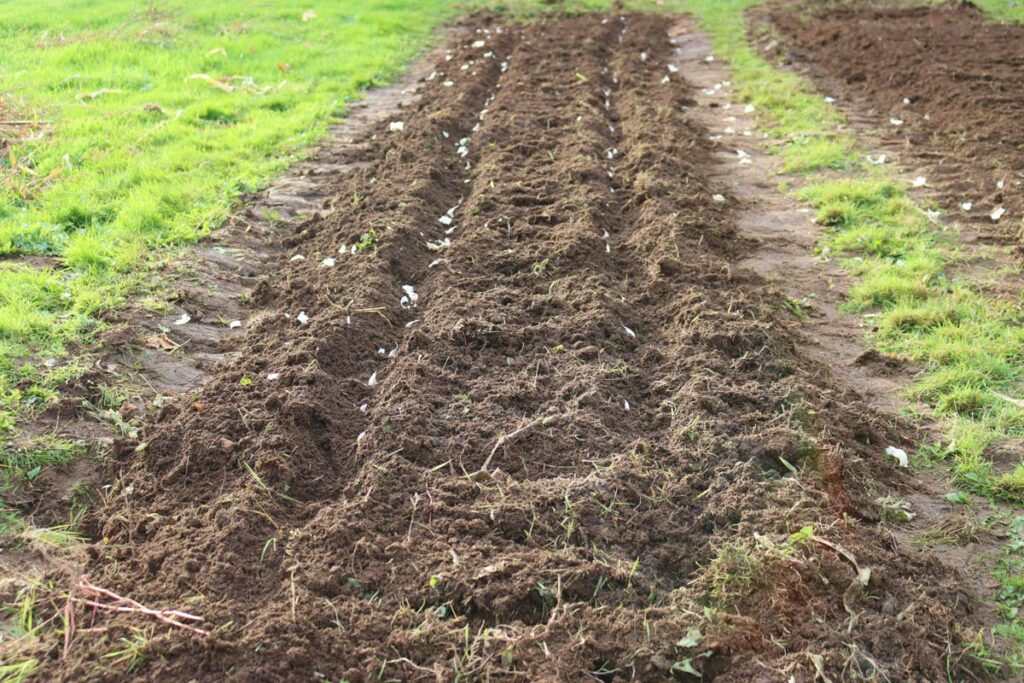
How Do You Properly Plant Garlic?
- Break the cloves apart and remove any loose paper. Don’t remove all the paper though, you don’t want the actual garlic showing, that paper is a nice protective layer.
- Plant the garlic clove with the fat end down in the soil (the part that is closest to the root from your main bulb).
- Plant each clove with about two inches of soil covering it from the tip of the clove.
- Keep cloves six to eight inches apart in all directions.

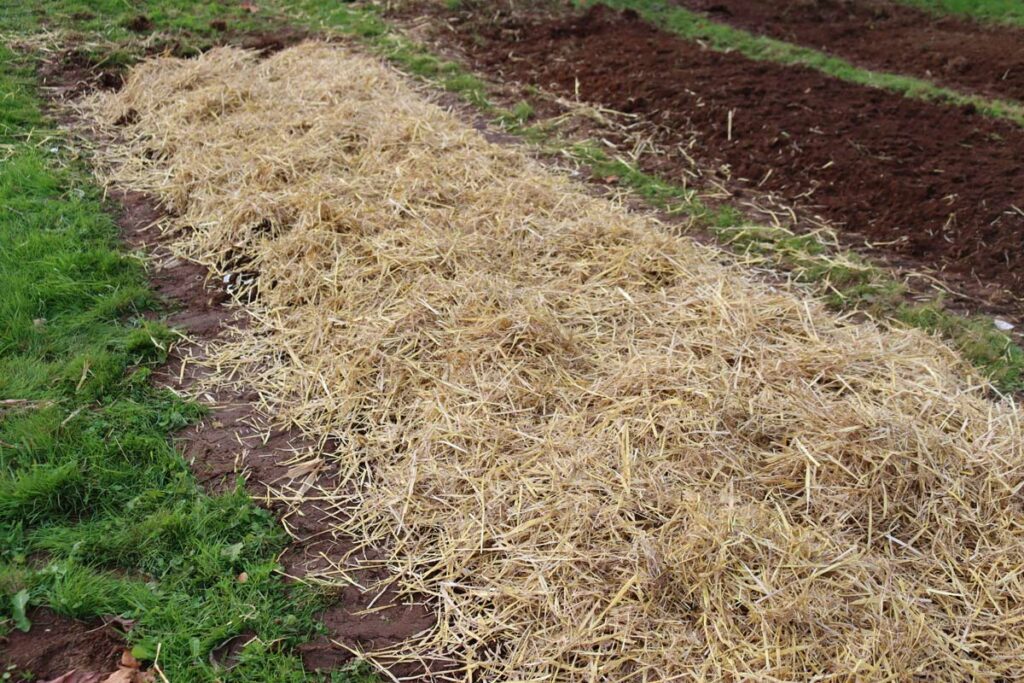
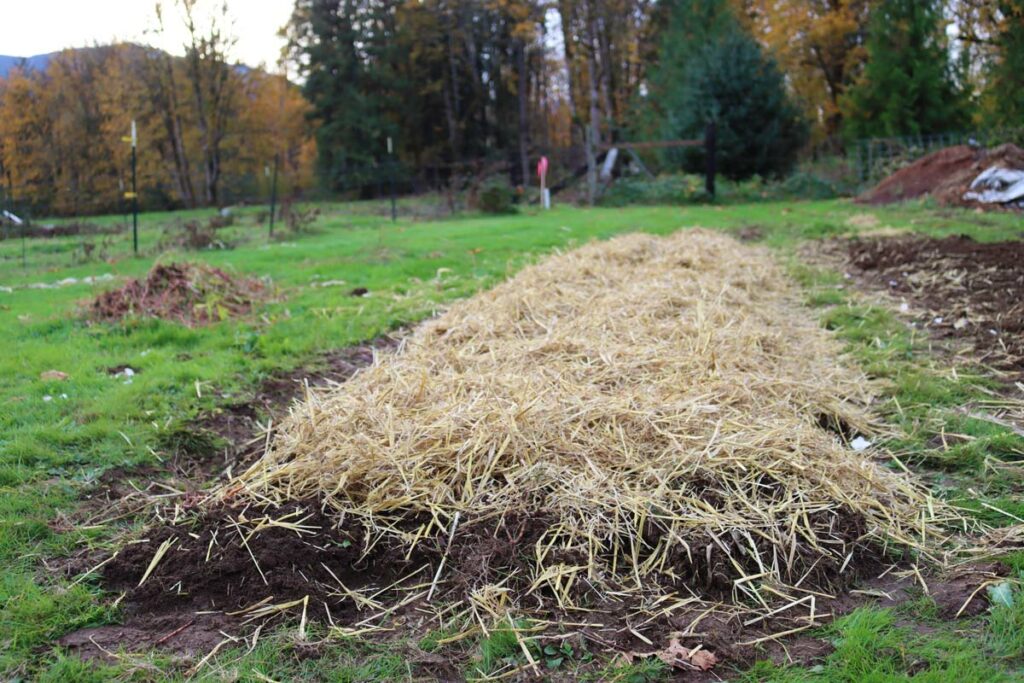
Garlic Planting Tips for Success
- Be sure your soil is well-draining. In the past, we’ve used raised beds. After tilling down deep and heavily composting with dried cow manure, we now plant in our in-ground garden beds.
- Weed free is a plus as garlic doesn’t like to compete for space.
- Mulch – Once your garlic has sprouted, mulch around the green shoots (it’s fine if you mulch with straw right at planting time). After your first hard frost (green shoots will wither), mulch with straw over the entire bed.
- Pull mulch in the spring – Once temperatures are warming up and you begin to see new growth on the garlic, you can pull the mulch back from the new shoots to allow for more sunlight to get through.

When Do I Harvest Garlic?
I have two other posts with more information on how to harvest garlic and how to braid and store garlic for long-term storage.
For now, I hope you get some garlic in the ground this year, for most places, it’s not too late! If you have mild winters, you can even plant in late winter or early spring (or if you forget, I’ve planted as late as February with success but don’t recommend waiting that long as a principal).
Do you plant winter crops? Have you planted garlic before?
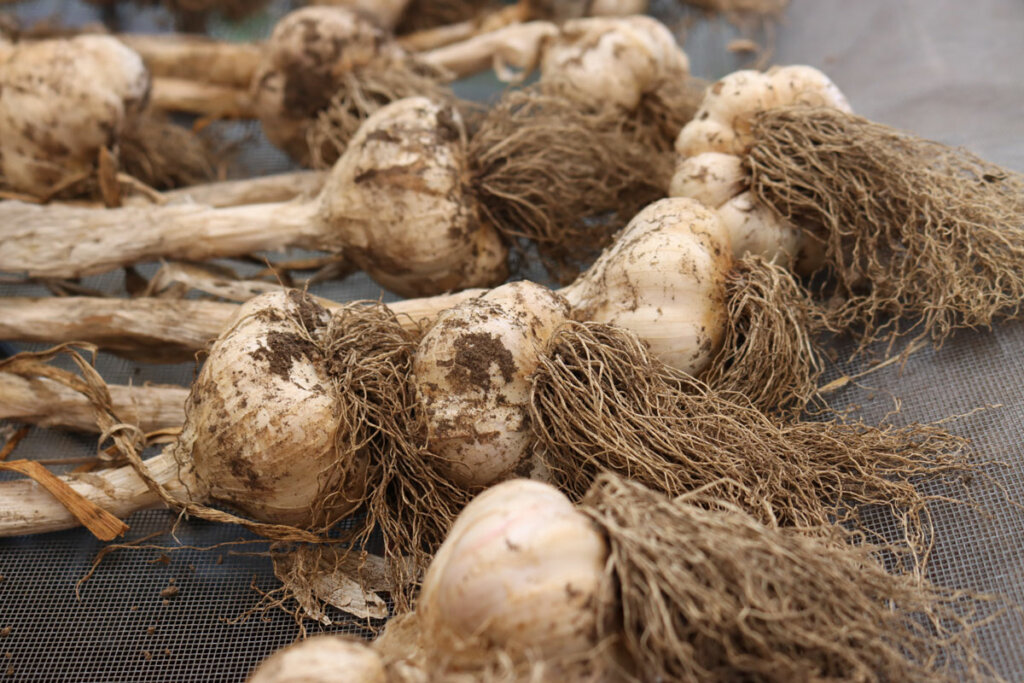
More Gardening Articles
- Fall Gardening Tasks for a Better Garden Next Spring
- Wood Chips for Garden Mulch – Beneficial or Not?
- Beginner Gardening Secrets You Need to Know
- 13 Basic Steps to Starting a Vegetable Garden
- How to Create a Garden Plan for More Harvest & Less Stress
- Planning a Fall Garden (28 Crops to Plant in August)
- Hugelkultur Garden Beds (What, Why & How)
- Growing Onions From Seed
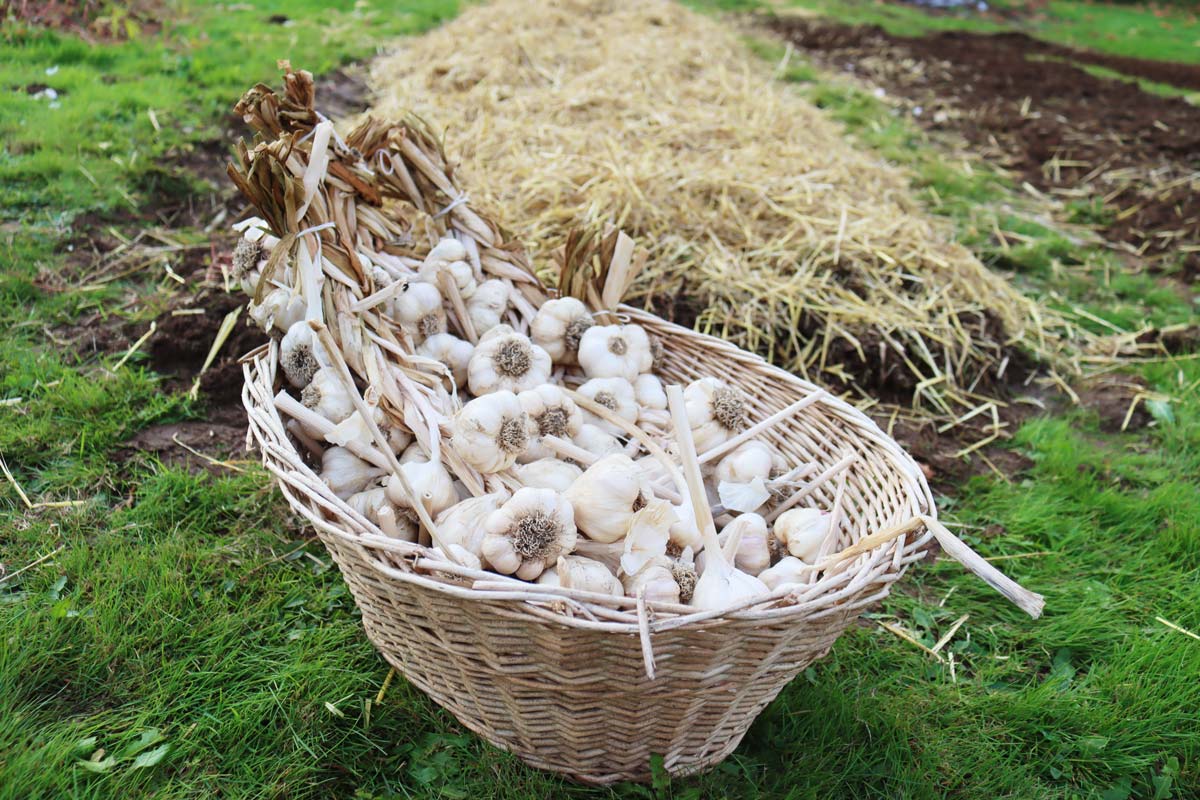
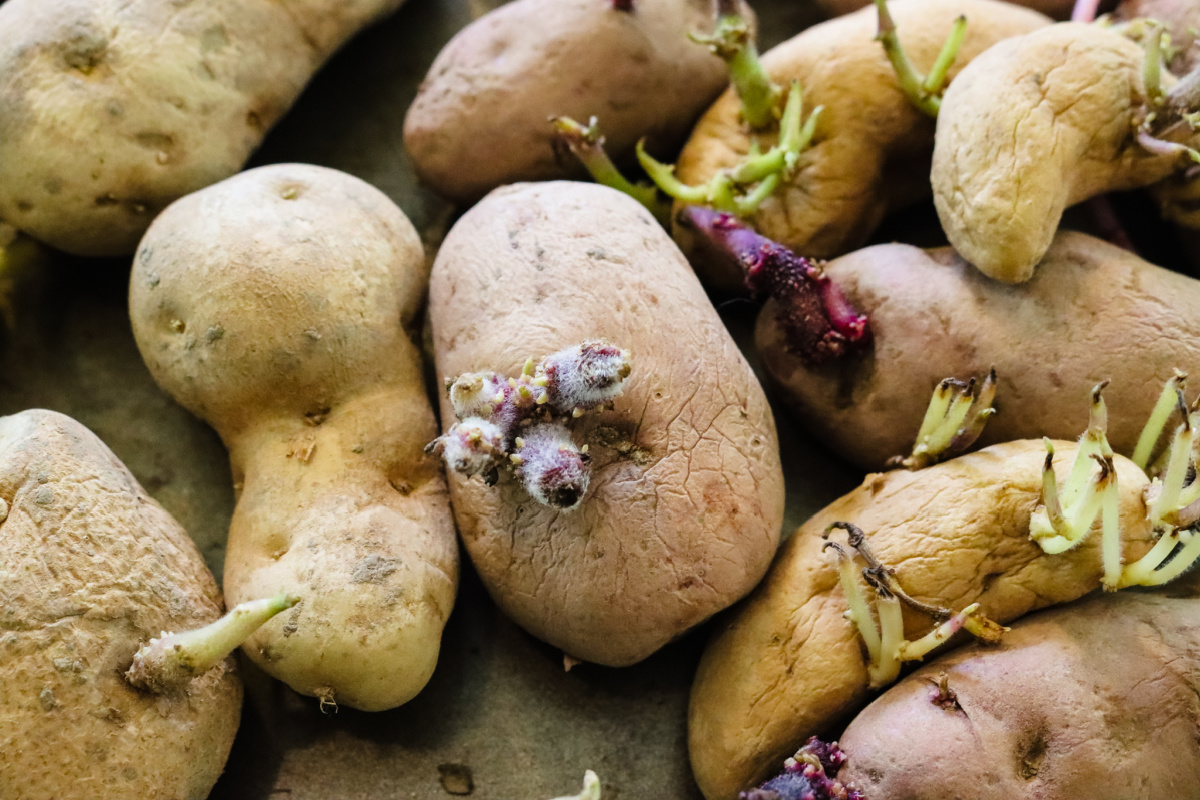
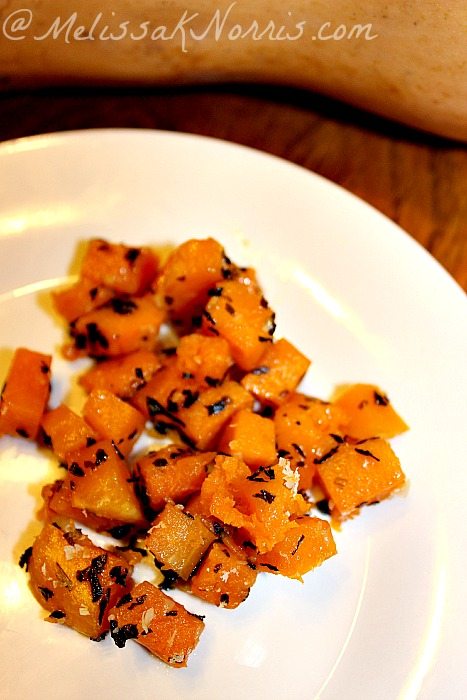
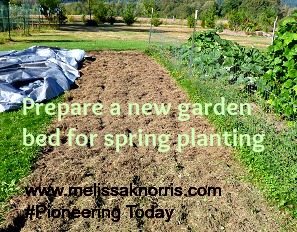
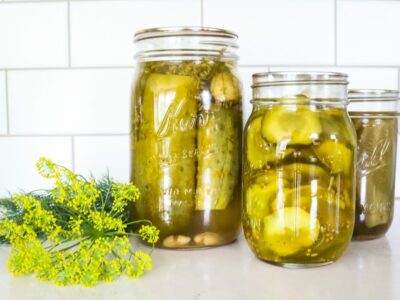






I just wanted to mention an important fact, not ALL of the Pacific Northwest is a lush green rainy oasis. I live in the Yakima Valley in Washington, I was born and raised in the High Desert of Eastern Oregon…The only Lush green Areas of the Pacific Northwest are technically the zone West of the Cascades…So our growing season and Areas are very different. This was a very odd year, we, folks near and around that I know that garden didn’t even get plants in the ground till almost mid May this year…Anyways, I guess my point was to ask how moist we need to keep the garlic before the first fall, because the ground is VERY dry here…Even though it’s Fall….
I wondered if ours was the only family that loved garlic that much! Fifteen cloves a year, (ha!) we probably go through that in a month during this time of the year, when we’re making our salsa and canning everything in sight! Excellent timing on the article, I have 1 more pound to plant and I took your advice on variety this year so I’m excited to see how it turns out.
Awesome.
I received garlic from Baker Creek and planted all but 2 bulbs, They are German hardneck. Should I use them, or can I plant them now, in March? I am zone 9b near the Oregon coast.
Thank you so much! I love all of the information that you give us!
Kathie
Inspirational. Thank you
Thanks for all the wonderful tips and recipes. I have ordered your book and I am waiting for it to arrive. I will plant some garlic this fall and can’t wait for the harvest. Thanks again.
[…] the vinegar and lime juice). Plant your garlic now in October for next years salsa! You can read how to plant your own garlic here. Salsa is safe to waterbath can as long as you follow a canning recipe that uses enough acid to […]
[…] How to plant garlic now for harvest next summer from MelissaKNorris.com […]
[…] 3 cloves minced garlic (we grow our own garlic) […]